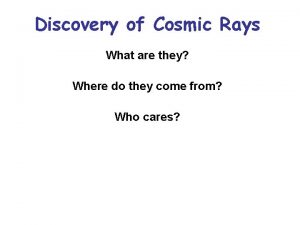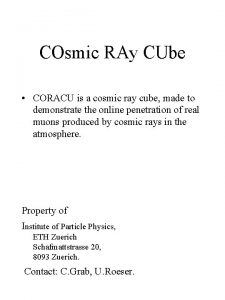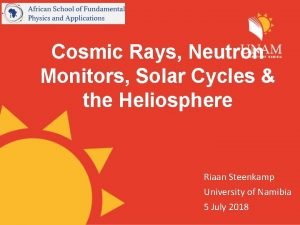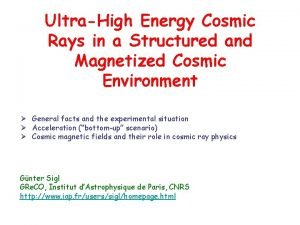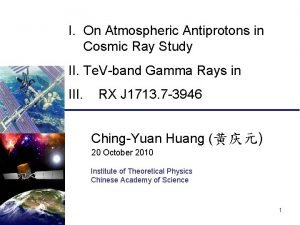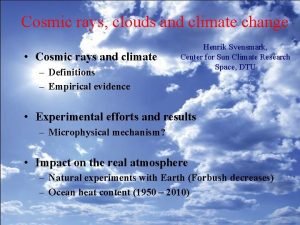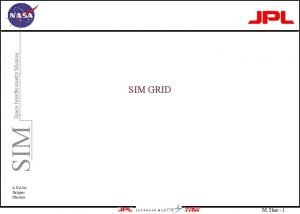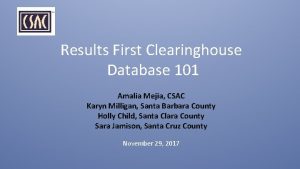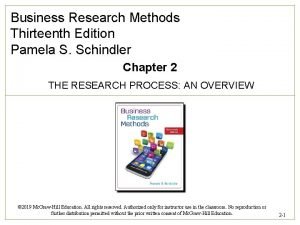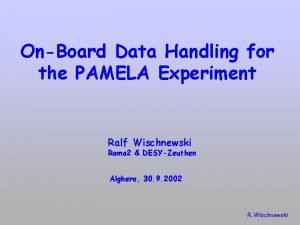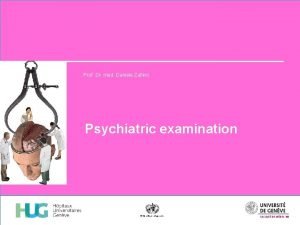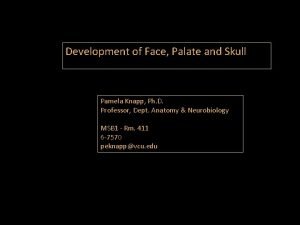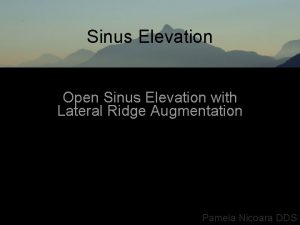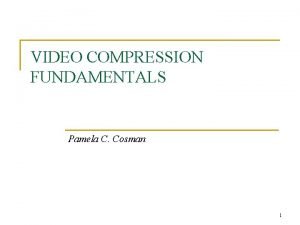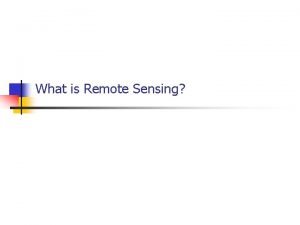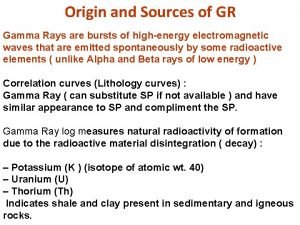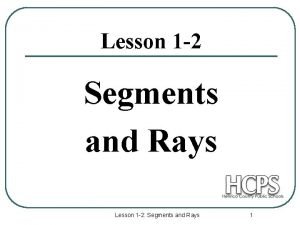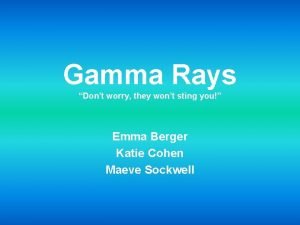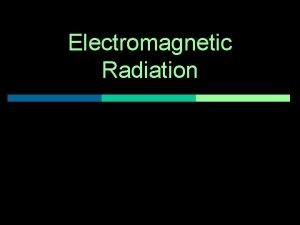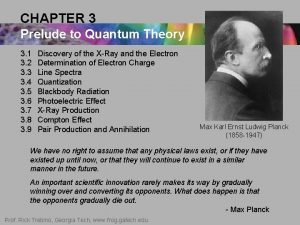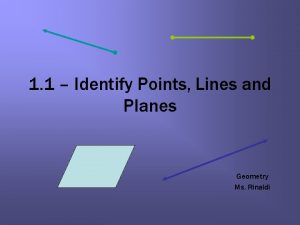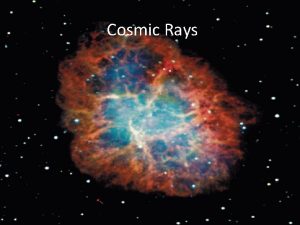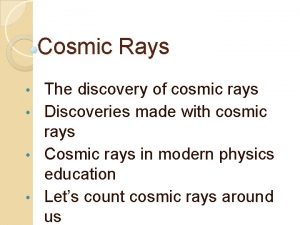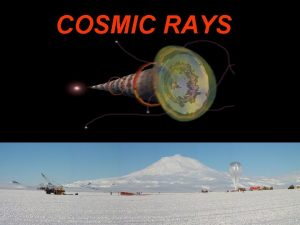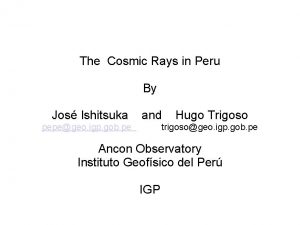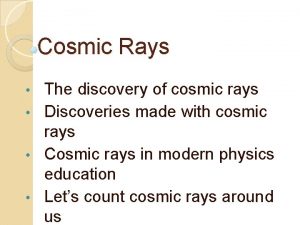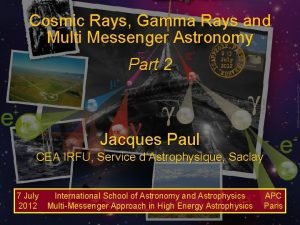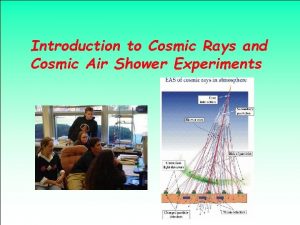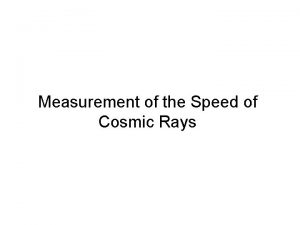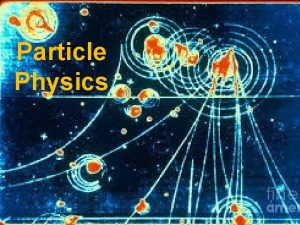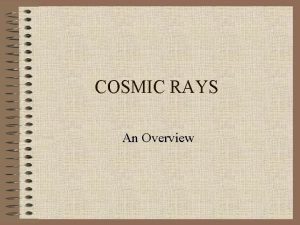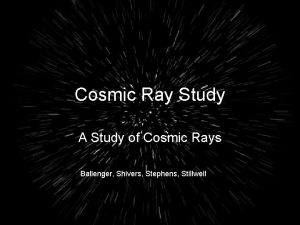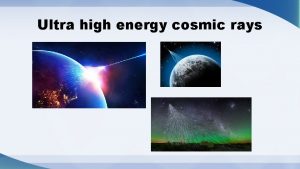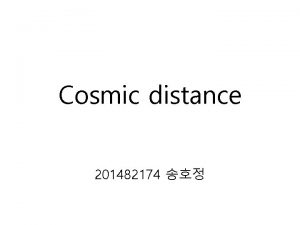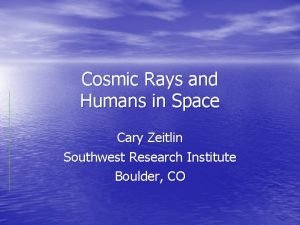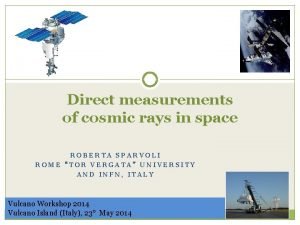PAMELA Space Mission First Results in Cosmic Rays
























![Cirelli, Franceschini, Strumia ar. Xiv: 0802. 3378 v 2 [hep-ph] Cirelli, Franceschini, Strumia ar. Xiv: 0802. 3378 v 2 [hep-ph]](https://slidetodoc.com/presentation_image/8541fe74e021795dd1efcbfb4e767895/image-25.jpg)

![Potgieter at al. ar. Xiv: 0804. 0220 v 1 [astro-ph] Potgieter at al. ar. Xiv: 0804. 0220 v 1 [astro-ph]](https://slidetodoc.com/presentation_image/8541fe74e021795dd1efcbfb4e767895/image-27.jpg)









































- Slides: 68

PAMELA Space Mission First Results in Cosmic Rays Piergio Picozza INFN & University of Rome “ Tor Vergata” , Italy Pamela Collaboration Rencontres de Blois 2008 Challenges in Particle Astrophysics Blois, May 22, 2008

PAMELA Payload for Antimatter Matter Exploration and Light Nuclei Astrophysics

PAMELA Collaboration Italy: Bari Florence Frascati Naples Rome Trieste CNR, Florence Russia: Moscow St. Petersburg Germany: Sweden: Siegen KTH, Stockholm

Pamela as a Space Observatory at 1 AU Search for dark matter annihilation Search for antihelium (primordial antimatter) Search for new Matter in the Universe (Strangelets? ) Study of cosmic-ray propagation Study of solar physics and solar modulation Study of terrestrial magnetosphere Study of high energy electron spectrum (local sources? )

e- - p e+ p (He, . . . ) Trigger, To. F, d. E/dx - + Sign of charge, rigidity, d. E/dx GF ~21. 5 cm 2 sr Mass: 470 kg Size: 130 x 70 cm 3 Electron energy, d. E/dx, lepton-hadron separation

Design performance Energy range Antiproton flux Positron flux Electron/positron flux 80 Me. V - 190 Ge. V 50 Me. V – 270 Ge. V up to 2 Te. V (from calorimeter) Electron flux Proton flux Light nuclei (up to Z=6) Antinuclei search up to 400 Ge. V up to 700 Ge. V up to 200 Ge. V/n He/Be/C: -8 Sensitivity of O(10 ) in He-bar/He • Unprecedented statistics and new energy range for cosmic ray physics • Simultaneous measurements of many species

Resurs-DK 1 satellite § Main task: multi-spectral remote sensing of earth’s surface § Built by Ts. SKB Progress in Samara, Russia § Lifetime >3 years (assisted) § Data transmitted to ground via high-speed radio downlink § PAMELA mounted inside a pressurized container Mass: 6. 7 tonnes Height: 7. 4 m Solar array area: 36 m 2

PAMELA Launch 15/06/06 16 Gigabytes trasmitted daily to Ground NTs. OMZ Moscow

Orbit Characteristics 350 km SAA 70 o • Low-earth elliptical orbit • 350 – 610 km • Quasi-polar (70 o inclination) • Lifetime >3 years (assisted) 610 km

PAMELA Orbit Outer radiation belt Download @orbit 3754 – 15/02/2007 07: 35: 00 MWT NP SP S 1 S 2 S 3 95 min Inner radiation belt (SSA) orbit 3751 orbit 3752 EQ orbit 3753 EQ

Flight data: 0. 171 GV positron Flight data: 0. 169 GV electron

Flight data: 0. 632 Ge. V/c antiproton annihilation

Flight data: 84 Ge. V/c interacting antiproton

Flight data: 92 Ge. V/c positron

Flight data: 14. 7 GV Interacting nucleus (Z = 8)

PAMELA Status n Till 2 nd of March 2008 PAMELA has collected ~ 8. 8 TB of data, corresponding to ~ 109 triggers

4% 23% 73%


Signal (supersymmetry)… … and background (GLAST AMS-02)

Another possible scenario: KK Dark Matter Lightest Kaluza-Klein Particle (LKP): B(1) Bosonic Dark Matter: fermionic final states no longer helicity suppressed. e+e- final states directly produced. As in the neutralino case there are 1 -loop processes that produces monoenergetic γ γ in the final state.

P Secondary production (upper and lower limits) Simon et al. Ap. J 499 (1998) 250. from χχ annihilation (Primary production m(c) = 964 Ge. V) Ullio : astroph/9904086 Secondary production Bergström et Ap. J 526 (1999 215

Antiproton-Proton Ratio

Antiproton-Proton Ratio preliminary

Antiproton-Proton Ratio preliminary
![Cirelli Franceschini Strumia ar Xiv 0802 3378 v 2 hepph Cirelli, Franceschini, Strumia ar. Xiv: 0802. 3378 v 2 [hep-ph]](https://slidetodoc.com/presentation_image/8541fe74e021795dd1efcbfb4e767895/image-25.jpg)
Cirelli, Franceschini, Strumia ar. Xiv: 0802. 3378 v 2 [hep-ph]

Positron - Electron ratio
![Potgieter at al ar Xiv 0804 0220 v 1 astroph Potgieter at al. ar. Xiv: 0804. 0220 v 1 [astro-ph]](https://slidetodoc.com/presentation_image/8541fe74e021795dd1efcbfb4e767895/image-27.jpg)
Potgieter at al. ar. Xiv: 0804. 0220 v 1 [astro-ph]

Pamela Positrons n Till August 30 th about 20000 positrons from 200 Me. V up to 200 Ge. V have been analyzed n More than 15000 positrons over 1 Ge. V n Other eight months data to be analyzed

Positron - Electron ratio Pr eli m ina ry PAMELA

Positron - Electron ratio

Positron - Electron ratio Pr eli m ina ry

Positrons with HEAT

Positrons with HEAT & PAMELA Pr eli m ina ry

Problems ü Background calculation ü Solar Modulation at low energies ü Charge-sign dependence of solar modulation

Diffusion Halo Model

Secondaries / primaries i. e. Boron/ Carbon to constrain propagation parameters D. Maurin, F. Donato R. Taillet and P. Salati Ap. J, 555, 585, 2001 [astro-ph/0101231] B/C Ratio F. Donato et. al, Ap. J, 563, 172, 2001 [astro-ph/0103150] Antiproton flux Astrophysic B/C constraints Nuclear cross sections!!

Preliminary Results B/C Pr eli m ina ry

Helium and Hydrogen Isotopes

Secondary to Primary ratios

Flux (p/cm^2 sr s) Proton flux July 2006 Kinetic Energy (Ge. V)

Galactic H and He spectra Pr eli m ina ry ! !!

Solar Physics with PAMELA

Solar Modulation of galactic cosmic rays n Continuous monitoring of solar activity Pamela AMS-01 Caprice / Mass /TS 93 BESS n n n Study of charge sign dependent effects Asaoka Y. et al. 2002, Phys. Rev. Lett. 88, 051101), Bieber, J. W. , et al. Physical Review Letters, 84, 674, 1999. J. Clem et al. 30 th ICRC 2007

Antiproton-Proton Ratio preliminary

P/(cm^2 sr Ge. V s) Proton Spectra RED: JULY 2006 BLUE: AUGUST 2007 Pr eli m ina ry !!!

Primary spectrum F= July 2006 January 2007 August 2007 497± 2 481± 2 441± 2

BESS Coll. 30 th ICRC 2007

Positron Fraction Pr eli m ina ry Mirko Boezio, INFN Trieste - Fermilab, 2008/05/02

Pamela Clem at al. 30 th ICRC 2007

Charge sign dependence of cosmic ray modulation. n n n Two systematic deviations from reflection symmetry of the interplanetary magnetic field: 1) The Parker field has opposite magnetic polarity above and below the equator, but the spiral field lines themselves are mirror images of each other. This antisymmetry produces drift velocity fields that for positive particles converge on the heliospheric equator in the A+ state or diverge from it in A- state. Negatively charged particles behave in the opposite manner and the drift patterns interchange when the solar polarity diverge. 2) Systematic ordering of turbulent helicity can cause diffusion coefficients to depend directly on charge sign and polarity state. Bieber, J. W. , et al. Phys. Rev. Letters, 84, 674, 1999.

December 2006 Solar particle events Dec 13 th largest CME since 2003, anomalous at sol min

December 13 th 2006 event Preliminary!

December 13 th 2006 He differential spectrum Preliminary!

December 14 th 2006 event X-ray P, e- Low energy tail of Dec 13 th event Arrival of event of Dec 14 th Magnetic Field Neutron Monitor Solar Quiet spectrum Below. End galactic spectrum: of event of Dec 14 th Start of Forbush decrease Decrease of primary spectrum Arrival of magnetic cloud from CME of Dec 13 th Shock 1774 km/s (gopalswamy, 2007) Decrease of Neutron Monitor Flux Preliminary!

Radiation Belts South Atlantic Anomaly Secondary production from CR interaction with atmosphere

Pamela World Maps: 350 – 650 km alt 36 Me. V p, 3. 5 Me. V e-

Pamela maps at various altitudes !!! ! Y R A N I RELIM P Altitude scanning

Primary and Albedo (sub-cutoff measurements)

Other Objectives

Search for the existence of Antimatter in the Universe PAMELA AMS in Space Se arc AMS se hf or the ex ist en ce of a r Accelerators nti U niv ers or f ch o e h t r e n igi a Se The Big Bang origin of the Universe requires matter and antimatter to be equally abundant at the very hot beginning o e h t f U er v i n

What about heavy antinuclei? n The discovery of one nucleus of antimatter (Z≥ 2) in the cosmic rays would have profound implications for both particle physics and astrophysics. • For a Baryon Symmetric Universe Gamma rays limits put any domain of antimatter more than 100 Mpc away (Steigman (1976) Ann Rev. Astrophys. , 14, 339; Dudarerwicz and Wolfendale (1994) M. N. R. A. 268, 609, A. G. Cohen, A. De Rujula and S. L. Glashow, Astrophys. J. 495, 539, 1998)

Antimatter Direct research n Antimatter which has escaped as a cosmic ray from a distant antigalaxy Streitmatter, R. E. , Nuovo Cimento, 19, 835 (1996) n Antimatter from globular clusters of antistars in our Galaxy as antistellar wind or anti-supernovae explosion K. M. Belotsky et al. , Phys. Atom. Nucl. 63, 233 (2000), astro-ph/9807027

Cosmic-ray antimatter search BESS combined (new) expected “We must regard it rather an accident that the Earth and presumably the whole Solar System contains a preponderance of negative electrons and positive protons. It is quite possible that for some of the stars it is the other way about” P. Dirac, Nobel lecture (1933)

High Energy electrons n n n The study of primary electrons is especially important because they give information on the nearest sources of cosmic rays Electrons with energy above 100 Me. V rapidly loss their energy due to synchrotron radiation and inverse Compton processes The discovery of primary electrons with energy above 1012 e. V will evidence the existence of cosmic ray sources in the nearby interstellar space (r 300 pc)

CALO SELF TRIGGER EVENT: 167*103 MIP RELEASED 279 MIP in S 4 26 Neutrons in ND

Search for New Matter in the Universe: An example is the search for “strangelets”. There are six types of Quarks found in accelerators. All matter on Earth is made out of only two types of quarks. “Strangelets” are new types of matter composed of three types of quarks which should exist in the cosmos. Carbon Nucleus p uu d n u d du du uu uu d d du u du Strangelet d u ss u s ud du s d u dd sdu d d s us u u uu d d AMS courtesy i. A stable, single “super nucleon” with three types of quarks ii. “Neutron” stars may be one big strangelet

Conclusion n PAMELA is the first space experiment which is measuring the Antiprotons and Positrons to the high energies (> 150 Ge. V) with an unprecedented statistical precision n PAMELA is setting a new lower limit for finding Antihelium n PAMELA is looking for Dark Matter candidates n n PAMELA is providing measurements on elemental spectra and low mass isotopes with an unprecedented statistical precision and is helping to improve the understanding of particle propagation in the interstellar medium PAMELA is able to measure the high energy tail of solar particles.

THANKS http: // pamela. roma 2. infn. it
 Cosmic rays discoverer
Cosmic rays discoverer Cosmic rays
Cosmic rays Cosmic rays
Cosmic rays Cosmic rays
Cosmic rays Cosmic rays
Cosmic rays Cosmic rays and clouds
Cosmic rays and clouds Simspace portal
Simspace portal Results first clearinghouse
Results first clearinghouse Triangulo del bullying
Triangulo del bullying Dra pamela santos
Dra pamela santos Pamela thielman
Pamela thielman Pamela tossati
Pamela tossati Pamela goldberg
Pamela goldberg La mia citta'
La mia citta' Pamela elizabeth modica
Pamela elizabeth modica Pamela nicoara
Pamela nicoara Pamela aray
Pamela aray Pamela schindler
Pamela schindler Dr pamela beck
Dr pamela beck Pamela guest
Pamela guest Pam nicholson net worth
Pam nicholson net worth Pamela schwartz kaiser
Pamela schwartz kaiser Pamela fishman gender theory
Pamela fishman gender theory Pamela harman
Pamela harman Pamela anderson eating disorder
Pamela anderson eating disorder Kobe bryant childhood facts
Kobe bryant childhood facts Pamela weber harris
Pamela weber harris Pamela ralf
Pamela ralf Pamela masajes
Pamela masajes Vignette style mcq
Vignette style mcq Euclideon unlimited detail
Euclideon unlimited detail Pamela hines science
Pamela hines science Pamela zullino
Pamela zullino Ego dystonic
Ego dystonic Pamela knapp
Pamela knapp Pamela parada
Pamela parada Pamela caillens
Pamela caillens Pamela nicoara
Pamela nicoara Pamela rackow
Pamela rackow Pamela elizabeth modica
Pamela elizabeth modica Careminders franchise reviews
Careminders franchise reviews Patricia denning stars in a sad movie
Patricia denning stars in a sad movie Pamela jeziorska-biel
Pamela jeziorska-biel Pamela c. cosman
Pamela c. cosman Pamela pompa
Pamela pompa Pamela carver
Pamela carver Dr pamela kum
Dr pamela kum Dr pamela t hartman
Dr pamela t hartman Unscented trajectory chapter 5
Unscented trajectory chapter 5 Space junk the space age began
Space junk the space age began Camera space to world space
Camera space to world space Cartesian space vs joint space
Cartesian space vs joint space World space computer
World space computer Limitations of remote sensing
Limitations of remote sensing Origin of gamma rays
Origin of gamma rays Name all rays
Name all rays Definition of opposite rays
Definition of opposite rays Postulates examples
Postulates examples Meaning of linear pair
Meaning of linear pair Caged bird metaphors
Caged bird metaphors Material that block light
Material that block light Renal lobe and lobule
Renal lobe and lobule How to name an angle in four ways
How to name an angle in four ways Gamma rays discovery
Gamma rays discovery Gamma rays uses
Gamma rays uses N-rays
N-rays Basic geometry terms
Basic geometry terms Examples of points lines and planes
Examples of points lines and planes Two collinear rays that do not intersect
Two collinear rays that do not intersect
